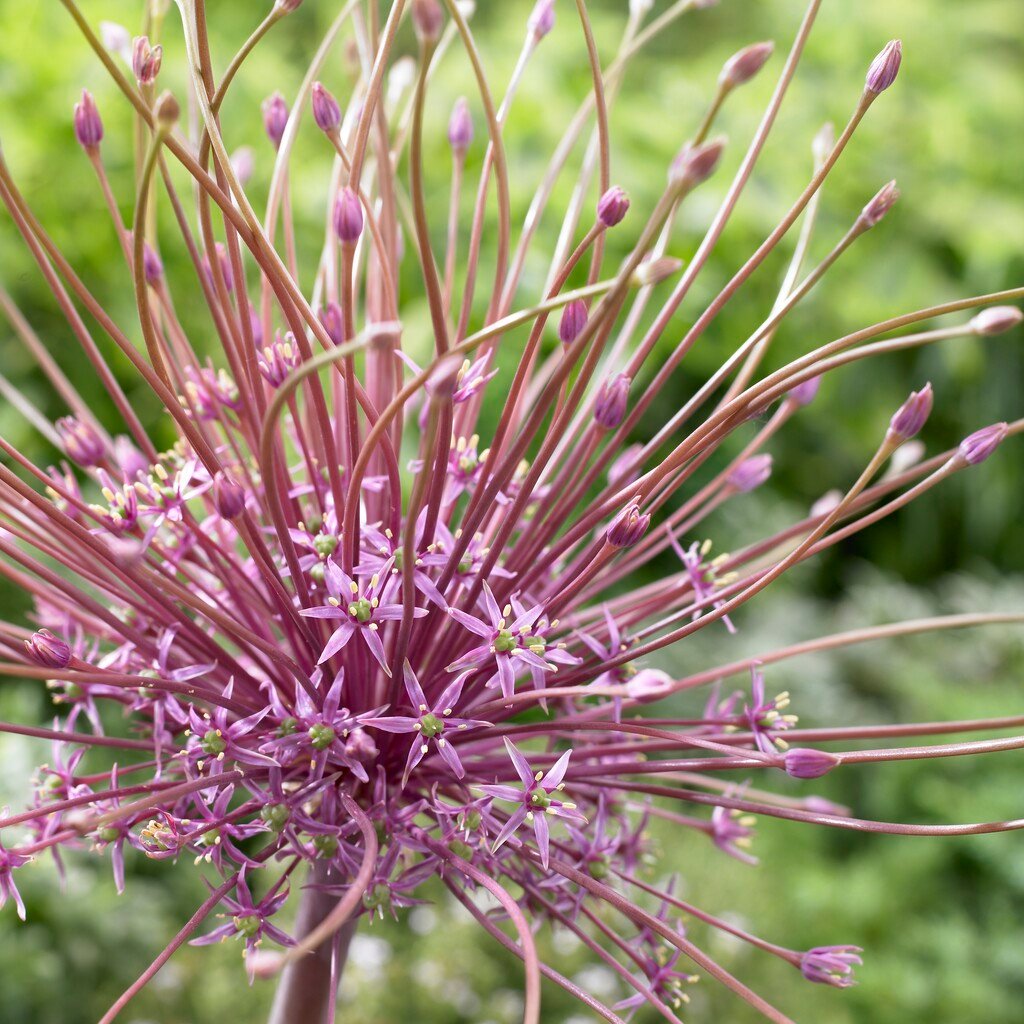Allium schubertii
Schubert's allium
Bulbous perennial about 60cm tall, producing bright-green, strap-shaped basal leaves in spring, which die back before the flowers appear. Umbels of 50 or more star-shaped, pinky-purple flowers on stems of differing lengths produce a starburst effect up to 30cm across in early summer
Size
Ultimate height
0.5–1 metresTime to ultimate height
2–5 yearsUltimate spread
0.1–0.5 metresGrowing conditions
Moisture
Moist but well–drained, Well–drainedpH
Acid, Alkaline, NeutralColour & scent
| Stem | Flower | Foliage | Fruit | |
| Spring | Green | |||
|---|---|---|---|---|
| Summer | Purple | Green | ||
| Autumn | ||||
| Winter |
Position
- Full sun
Aspect
West–facing or South–facing or East–facing
Exposure
Sheltered Hardiness
H4Botanical details
- Family
- Amaryllidaceae
- Native to GB / Ireland
- No
- Foliage
- Deciduous
- Habit
- Clump forming
- Genus
Allium are bulbous herbaceous perennials with a strong onion or garlic scent, linear, strap-shaped or cylindrical basal leaves and star-shaped or bell-shaped flowers in an umbel on a leafless stem
- Name status
Correct
- Plant range
- Turkey to Jordan,Libya
How to grow
Cultivation
Grow in full sun and fertile well-drained soil. It is best to grow in containers where garden soil is heavy clay and prone to saturation over winter. See allium cultivation
Propagation
Propagate by seed, sowing in containers in a cold frame when just ripe or in the spring. Alternatively, remove offsets in autumn
Suggested planting locations and garden types
- City and courtyard gardens
- Cottage and informal garden
- Gravel garden
- Wildlife gardens
- Cut flowers
- Flower borders and beds
Pruning
No pruning required. The seedheads are attractive
Pests
May be susceptible to allium leaf miner and onion fly
Diseases
May be susceptible to onion white rot, and onion downy mildew
Love gardening
Sign up to receive regular gardening tips, inspiration, offers and more
View our Privacy Policy
Get involved
The Royal Horticultural Society is the UK’s leading gardening charity. We aim to enrich everyone’s life through plants, and make the UK a greener and more beautiful place.
